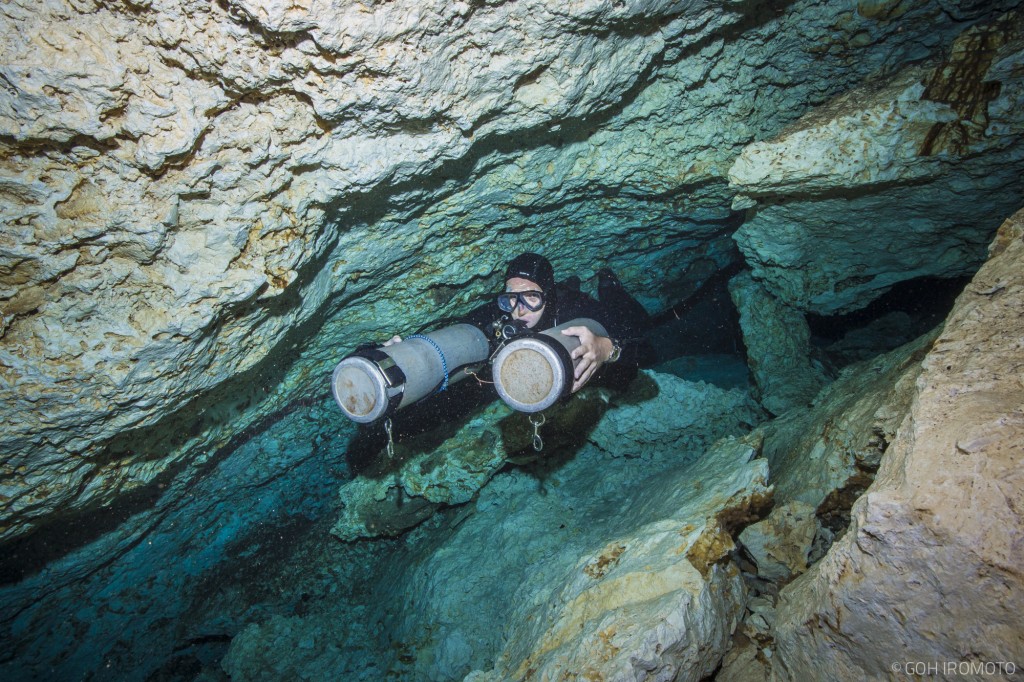By Henley Spiers
I’ve just arrived on Malapascua Island in the Philippines, where over the next two months I’ll work my way up to becoming a Tec diving instructor. I’ve been a recreational instructor in Bali for the last two years and want to expand my experience and professional dive résumé. My first taste of technical diving was at Blue Season Bali, where PADI course director and Tec instructor-trainer Tom West molded me into a Tec-50 diver.
Initially I had no interest in technical diving. I distinctly remember chuckling to myself at the Tec divers I saw, wondering why anyone would want to carry more equipment underwater. I love the sense of freedom and proximity to nature that can envelop you in “the silent world.” However, Tom had a reputation as an inspirational teacher, and as I was working in a dive shop with Tec courses it seemed rude not to at least try.
The initial pool sessions were tough; I felt like an open-water diver again, strapped into the twin tanks and trying to conduct valve drills. But as we progressed through the Tec 40, 45 and 50 courses, new skills started to come naturally, and by the end of the course I was enjoying myself. The satisfaction in Tec diving comes from taking your dive skills, buoyancy and awareness to the next level. Knowing that you’re capable of managing life-threatening emergencies at depth, and without the option to ascend straight to the surface (due to decompression requirements) is quite a buzz. And it’s satisfying to execute your dive plan with military precision.
I chose to do my next stage of training at Evolution in Malapascua, based on the reputation of Matt Reed, TDI Instructor Trainer. I spent the first few days getting reacquainted with technical diving and learning the Evolution team’s procedures. While the founding principles remain the same as those I used in Bali, there were a few slight variations, and as Tec diving is such a rigorously planned and executed affair, you must stay on top of these things. After just three months out of the water, my Tec diving skills had gotten a little rusty.
My first courses were sidemount and technical sidemount. Sidemount diving, as the name suggests, involves placing your tank(s) on either side of your body rather than on your back. Cave and wreck divers often favor this configuration, as it reduces your profile and allows you to squeeze through small gaps. You wear a harness with BCD, and strap a tank on each side, each with its own regulator and SPG. My first shallow-water session proved monumentally frustrating. Swimming around was fine but when it came to unclipping the tanks underwater I really struggled; my hands and knuckles were covered in cuts by the end of the session. The idea is that you can unclip the tanks and put them out in front of you, Superman style, thus streamlining yourself. After some sizing adjustments to the harness, the afternoon dive went much more smoothly. I was now comfortably unclipping and ‘Superman-ing’ with the tanks. Compared to having doubles on your back, sidemount offers an incredible level of freedom. Matt set up obstacle courses and we were soon flying around them with tanks held out front, barrel-rolling and even swimming upside down.
The next day it was on to technical sidemount, which means adding our deco 50-percent oxygen and 100-percent oxygen tanks on either side. This increases your profile underwater so you must keep the tanks as trim as possible against your body. You have a couple of clips on each side of your waist. As you breathe down your tanks and they become positively buoyant, you adjust your tank position to the second clip position. The aim here is to be as streamlined as possible. Every few minutes you also switch your breathing from one tank to the other. That way the pressure in each tank runs down at roughly the same rate, and if there is a failure with either tank or regulator, you’ll still have gas to breathe. As with all new things, building up experience is key to comfort and enjoyment. I spent the next few days doing deco dives with the sidemount rig, buddied up with Evolution co-owner David Joyce — a hugely experienced Tec diver and Trimix instructor. On one dive we visited the Japanese Mogami wreck down at 164 feet, where I was beguiled by the bits of old gas masks, uniforms and even a few bones we saw.
I’ll keep you updated on my Tec instructor internship in the coming weeks, until then, we’d love to hear your experiences with technical and sidemount diving.



